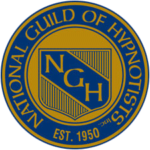
Orthomolecular Medicine News Service, January 26, 2017
Vitamin C Papers Hot off the Press
by Robert G Smith, PhD
(OMNS, Jan 26, 2017) Vitamin C is needed by the body to maintain health. It is a “macro-vitamin,” because although not required in large quantities to support energy metabolism, it is required in the diet in amounts much larger than most of the other known “micro-nutrient” vitamins.[1] Typical best daily doses for adults range from 500 to 10,000 mg (milligrams) or more, depending on the stress level and disease condition.[1] It is the most important water-soluble antioxidant in the body, essential for providing antioxidant protection against the onslaught of oxygen, light, and toxins. It is also required to create and maintain collagen, the most common protein in the body, found in the skin, arteries and veins, eyes and brain, and in all organs. [2] However, most people don’t get enough vitamin C even when their diet includes excellent quantities of fresh vegetables and fruits.
Medical research over the last 75 years has shown that supplements of vitamin C can prevent or reverse many progressive diseases such as heart disease, cancer, diabetes, arthritis, and chronic eye disease.[1-5] The effect of vitamin C on disease conditions and maintaining health continues to be studied. Each of the research studies cited below increments our knowledge of essential nutrients. The latest research from the past several months provides important new evidence about the vital health benefits of vitamin C:
Vitamin C protects against COPD
Many of us are familiar with TV ads promoting drugs to treat the symptoms of Chronic Obstructive Pulmonary Disease (COPD). Smoking is a big risk factor because oxidative toxins in smoke can damage the lungs. But recent research shows that vitamin C can reduce the risk of COPD. In a recent study, heavy smokers who had the highest intake of vitamin C in their diet (more than 140 mg/day) had a 77% reduction in risk for COPD compared to those with low intake.[6] Other nutrients were helpful too, such as retinol (a vitamin A precursor found in egg yolks, butter, and liver) and carotene (another vitamin A precursor found in carrots and other orange and dark green vegetables). The authors suggest that these essential antioxidants improve the immune response and are responsible for antioxidant defenses in the lungs that aid recovery from inhaling toxins in smoke. The mechanism is thought to be in part vitamin C’s ability to restore vascular endothelial growth factor levels and proliferation of alveolar cells in the lungs.[6]
Vitamin C protects against early Alzheimer’s Disease
Alzheimer’s Disease (AD), a progressive deterioration of the brain and its cognitive function, is under intensive study because it affects many older people and the cause is currently unknown. Although some of the risk factors are known, such as age, smoking, and genetic predisposition, there is no effective drug therapy to cure or prevent progression of AD.[7] However, in a recent study, it was found that vitamin C, carotenoids, and vitamin B6 in the diet, along with unsaturated fatty acids and to a lesser extent essential minerals, were protective against AD.[8] Vitamin C is known to protect against oxidation from toxins in smoke which are hypothesized to be a potential causative factor in AD.
Vitamin C helps to reduce risk of obesity
Stem cells are a critical component of the body’s recovery from injury and disease. For example, the inflammation that surrounds a physical injury such as a cut on the skin or damage to a joint or bone attracts stem cells and signals them to create new cells of an appropriate type to repair the injury. A recent paper on stem cell differentiation reported that vitamin C (a) helps to transform adult differentiated cells back into stem cells, (b) inhibits stem cells from differentiating into adipocytes (fat cells), and (c) drives differentiation of stem cells into myogenesis (muscle) and osteogenesis (bone).[9] The effect of vitamin C is thought to reprogram the methylation sites in DNA in the stem cells to provide a long-lasting epigenetic signal. The study concludes that vitamin C when taken in sufficient doses (up to 3,000 mg) is safe and may help to attenuate the creation of fat cells and to maintain muscle mass in older people.[9]
Vitamin C helps to prevent stress, depression, and anxiety
Most animals can make their own ascorbate from glucose, but guinea pigs, some birds, and higher primates cannot. They must get ascorbate (vitamin C) from their diet. Mice normally don’t need ascorbate in their diet because their body can make as much as needed to recover from stress and disease; for them it is not a vitamin. A recent study tested the effect of vitamin C in transgenic mice with a mutation that made them unable to make their own vitamin C, similar to humans.[10] The study showed that a lack of vitamin C caused a loss of appetite in males and an anxiety-like state of anorexia in the response to stress in females. The authors suggest that vitamin C is beneficial in maintenance of mental health.[10]
Vitamin C helps to prevent type 2 diabetes in those consuming nitrite in meat
Nitrite (NO2-) is known to be converted by the acid of the stomach into nitrosamine compounds which can cause insulin resistance and cancer. The creation of nitrosamine is also promoted by cooking at high temperatures such as in frying. A recent randomized study reported that those with higher intakes of animal-based nitrite had a higher risk of developing type 2 diabetes, but only in those subjects who had low vitamin C intake.[11] A higher vitamin C intake was associated with decreased risk of type 2 diabetes, even in those with high intake of nitrite. Plant sources of nitrite did not cause an increase in type 2 diabetes risk, nor did animal or plant sources of nitrate (NO3-). The study suggests that nitrites in processed meat are a risk factor for type 2 diabetes.[11]
Macular degeneration is associated with lower intakes of antioxidants
Progressive eye disease such as age-related macular degeneration (AMD) is a common cause of blindness. Over many years, the eye is damaged by oxidation from bright light and exposure to toxic substances such as components of cigarette smoke in the blood and other toxic chemicals in the environment. A recent study found that patients with late-stage AMD had lower intakes of vitamin C, vitamin E, beta carotene, folate, and vegetables, and higher intake of zinc than those in a healthy control group.[12] Although the study was observational (i.e. it could not establish causation) and the conclusions tentative, it contradicts the earlier AREDS study [13] that showed a benefit of zinc along with vitamins C and E and beta-carotene. Moral of the story: if you smoke, stop, eat your vegetables, and supplement with vitamins C and E.[4]
Vitamin C helps to prevent heart attacks
Inflammation predicting heart disease is often determined by the level of high-sensitivity C-reactive protein (hsCRP) in a blood test. Although vitamin C is known to strengthen arteries and make them more elastic, helping to prevent high blood pressure and stroke,[14-16] it has not been shown to increase survival in patients with active heart disease and failure. A recent study showed that low vitamin C intake is associated with a high level of hsCRP and inflammation, and shorter survival in patients with heart failure. But even with a high level of hsCRP, an adequate level of vitamin C is associated with longer survival.[17] The study suggests that adequate vitamin C could protect the heart from inflammation and thus help to prevent heart disease.
Vitamin C safety
Vitamin C is safe for most people to take in large doses.[1-3] Its main side effect is that in very high oral doses, it is not further absorbed by the gut and attracts water which tends to cause a laxative effect, gas, and diarrhea. Normally one finds the highest tolerated dose by gradually increasing the dose until the laxative effect occurs, then reducing the dose by 10-30%. This is known as the “bowel tolerance” dose.[1-3]. Although there has been much attention to possible harmful effects such as kidney stones, vitamin C does not tend to form kidney stones in most people with healthy kidneys. Along with adequate hydration, it helps to prevent kidney stones.[18] However in very rare cases of kidney dysfunction, problems have been reported with high doses of vitamin C, and for some people who have a rare mutation in the gene for the enzyme glucose-6-phosphate dehydrogenase (G6PD), high doses of vitamin C can cause hemolysis (rupture of red blood cells).[1-3] For most people, however, vitamin C does not cause serious side effects when taken up to the bowel tolerance dose. Below this dose, typically 3,000 – 10,000 mg/day for healthy people and 10,000 – 50,000 mg/day when ill with a cold, flu, or when exposed to other toxins or stresses, the laxative effect is not present and vitamin C helps the body to quickly recover from stress.
Adequate vitamin C is essential
These recent research articles on vitamin C reiterate what we have known or suspected for decades. An adequate level of vitamin C is essential for the body, and its absence contributes to a wide variety of conditions and diseases. Although many authors have suggested that it is best to get adequate vitamin C from fruits and vegetables in the diet, we know that supplements of vitamin C can raise the level in the body high enough to prevent heart disease, cancer, and diabetes. We also know that manufactured vitamin C found in high-quality supplements is the same vitamin C nutrient we get from eating fruits and vegetables.[1-3] Because the level of vitamin C goes down when the body is stressed, supplements can supply the extra amount needed to allow the body to recover [19-21]. For many people with ordinary everyday stress, this is 1,500 – 3,000 mg/day, or 500 to 1,000 mg per meal, but it rises when acutely sick or critically ill to 20,000 – 100,000 mg/day, taken in divided oral doses.[1-5]
(Dr. Robert G. Smith is Associate Research Professor of Neuroscience at the University of Pennsylvania School of Medicine. He is the author of The Vitamin Cure for Eye Disease and also The Vitamin Cure for Arthritis.)
References:
1. Hickey S, Saul AW. Vitamin C: The Real Story, the Remarkable and Controversial Healing Factor. Basic Health Pubs, 2008. ISBN-13: 9781591202233.
2. Levy TE. Primal Panacea. Medfox Pubs, 2011. ISBN-13: 978-0983772804.
3. Saul AW (Ed) Orthomolecular Treatment of Chronic Disease: 65 Experts on Therapeutic and Preventive Nutrition. Basic Health Pubs, 2014. ISBN-13: 978-1591203704.
4. Smith RG. The Vitamin Cure for Eye Disease: How to Prevent and Treat Eye Disease Using Nutrition and Vitamin Supplementation. Basic Health Pubs, 2012. ISBN-13: 978-1591202929.
5. Smith RG, Penberthy T. The Vitamin Cure for Arthritis. Basic Health Pubs, 2015. ISBN-13: 978-1591203124.
6. Park HJ, Byun MK, Kim HJ, Kim JY, Kim YI, Yoo KH, Chun EM, Jung JY, Lee SH, Ahn CM. Dietary vitamin C intake protects against COPD: the Korea National Health and Nutrition Examination Survey in 2012. Int J Chron Obstruct Pulmon Dis. 2016 Oct 31;11:2721-2728.
7. Graham WV, Bonito-Oliva A, Sakmar TP. Update on Alzheimer’s Disease Therapy and Prevention Strategies. Annu Rev Med. 2017 Jan 14;68:413-430. doi: 10.1146/annurev-med-042915-
8. Lu Y, An Y, Guo J, Zhang X, Wang H, Rong H, Xiao R. Dietary Intake of Nutrients and Lifestyle Affect the Risk of Mild Cognitive Impairment in the Chinese Elderly Population: A Cross-Sectional Study. Front Behav Neurosci. 2016, 10:229. DOI:10.3389/fnbeh.2016.00229.
9. Rahman F, Bordignon B, Culerrier R, Peiretti F, Spicuglia S, Djabali M, Landrier JF, Fontes M. Ascorbic acid drives the differentiation of mesoderm-derived embryonic stem cells. Involvement of p38 MAPK/CREB and SVCT2 transporter. Mol Nutr Food Res. 2016 Dec 13. doi: 10.1002/mnfr.201600506. [Epub ahead of print]
10. Koizumi M, Kondo Y, Isaka A, Ishigami A, Suzuki E. Vitamin C impacts anxiety-like behavior and stress-induced anorexia relative to social environment in SMP30/GNL knockout mice. Nutr Res. 2016 Dec;36(12):1379-1391. doi: 10.1016/j.nutres.2016.11.006.
11. Bahadoran Z, Mirmiran P, Ghasemi A, Carlström M, Azizi F, Hadaegh F. Vitamin C intake modify the impact of dietary nitrite on the incidence of type 2 diabetes: A 6-year follow-up in Tehran Lipid and Glucose Study. Nitric Oxide. 2017 Jan 30;62:24-31. doi: 10.1016/j.niox.2016.11.005.
12. Gopinath B, Liew G, Russell J, Cosatto V, Burlutsky G, Mitchell P. Intake of key micronutrients and food groups in patients with late-stage age-related macular degeneration compared with age-sex-matched controls. Br J Ophthalmol. 2016 Nov 29. pii: bjophthalmol-2016-309490. doi: 10.1136/bjophthalmol-2016-
13. Age-Related Eye Disease Study Research Group. A randomized, placebo-controlled, clinical trial of high-dose supplementation with vitamins C and E, beta carotene, and zinc for age-related macular degeneration and vision loss: AREDS report no. 8. Arch Ophthalmol 2001;119:1417-36.
14. Shargorodsky M, Debby O, Matas Z, et al. Effect of Long-Term Treatment with Antioxidants (Vitamin C, Vitamin E, Coenzyme Q10 and Selenium) on Arterial Compliance, Humoral Factors and Inflammatory Markers in Patients with Multiple Cardiovascular Risk Factors. Nutr Metab (Lond) (Jul 6, 2010) 7:55. doi: 10.1186/1743-7075-7-55.
15. Kurl S, Tuomainen TP, Laukkanen JA, et al. Plasma Vitamin C Modifies the Association between Hypertension and Risk of Stroke. Stroke 33(6) (Jun 2002):1568-1573.
16. Levy, TE. Stop America’s #1 Killer: Reversible Vitamin Deficiency Found to be Origin of All Coronary Heart Disease. Henderson, NV: LivOn Books, 2006.
17. Song EK, Kang SM. Vitamin C Deficiency, High-Sensitivity C-Reactive Protein, and Cardiac Event-Free Survival in Patients With Heart Failure. J Cardiovasc Nurs. 2016 Dec 15. [Epub ahead of print]
18. What really causes kidney stones (and why vitamin C does not). OMNS, Feb 11, 2013. http://orthomolecular.org/
19. Schectman G, Byrd JC, Gruchow HW. The Influence of Smoking on Vitamin Status in Adults. Am J Public Health 79(2) (Feb 1989):158-162.
20. Berger MM. Vitamin C Requirements in Parenteral Nutrition. Gastroenterology 137(5 Suppl) (Nov 2009):S70-578. doi: 10.1053/j.gastro.2009.08.012.
21. Nathens AB, et al. Randomized, Prospective Trial of Antioxidant Supplementation in Critically Ill Surgical Patients. Ann Surg 236(6) (Dec 2002):814-822.







